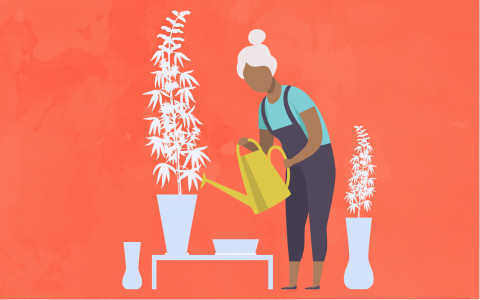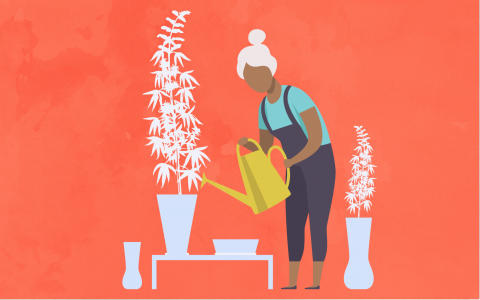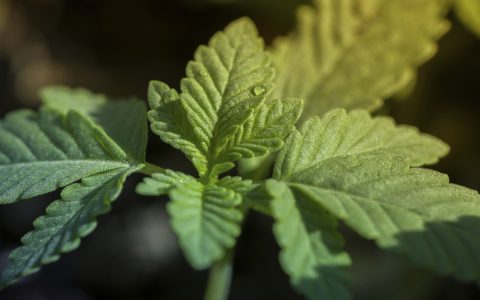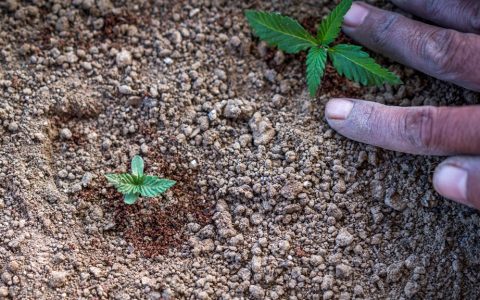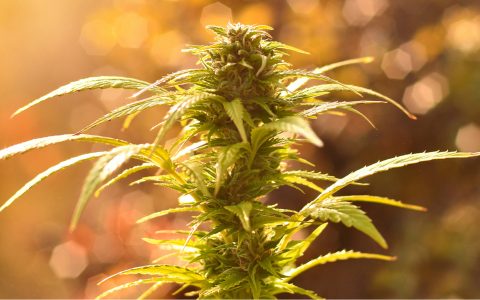Who grows the greatest cannabis on earth?
You do, or at least you can, and it’s not as hard as you might think. But if 2019 is going to be the year you pop your first seeds or root your first cuttings, now’s the time to start planning and preparing for a spring planting. You can get started by reading Leafly’s two primers—one for those growing indoors and one for those growing outdoors.
If, like most of us, you’re a hobbyist hoping to simply cover your yearly head stash, with plenty leftover to gift to friends, I’d definitely recommend starting outdoors, assuming you’ve got a suitable space to do so. Because depending on the climate where you live (including the legal climate), it’s pretty likely you can cultivate a few plants right next to your heirloom tomatoes or summer squash. Setting up indoors means figuring out everything from high-intensity lights to advanced hydroponics.
If you haven’t heard, you can buy this stuff at a store now. But there’s still five good reasons you should take the means of cannabis production into your own hands this year.
Remember, we only started growing cannabis in basements and attics to avoid the cops. So let’s leave all that high-tech equipment to the professionals (and those still living under oppressive laws), and nurture your first-ever cannabis garden in your backyard—or side yard, or up on the roof, or wherever you’ve got a little space to work. Immediately, that takes an awful lot of the effort and expense out of the equation. And more importantly, small-batch sun-grown cannabis—cultivated in soil with organic nutrients—truly is the plant’s highest expression.
But before we fully dig into how you will grow the greatest cannabis on earth in 2019, we need to start by asking why bother?
I mean, if you haven’t heard, you can buy this stuff at a store now. But there’s still five good reasons you should take the means of cannabis production into your own hands this year.
Value
The most obvious reason to grow your own cannabis is that you can produce high-quality herb at a small fraction of what you’d pay at a dispensary, particularly once you factor in all of the taxes. For a rough estimate of return-on-investment, I asked my good friend and cannabis colleague Danny Danko, longtime cultivation editor at High Times magazine and author of the book Cannabis: A Beginner’s Guide to Growing Marijuana, for a run-down on the expected annual harvest for a six plant backyard garden, grown in soil with some basic organic fertilizer and plenty of sunshine.
“Six small outdoor plants should yield 8-10 ounces of dried buds, so you’re looking at approximately 3 pounds total at the end of the season, and if you grow large outdoor plants, they could yield a pound or more each,” he says.
Quality
Okay, it may be a bit of hyperbole to say you will grow the best cannabis on earth, particularly your first year trying, but here’s a little secret: they call it weed for a reason. Cannabis is an incredibly hardy plant, and one that’s adaptable to a wide range of environments, so minus some kind of catastrophic event (spider mites, mold, thieving neighbors), you’ll almost certainly succeed in harvesting some truly lovely buds.
Your dispensary may have the hottest new strains and the stankiest top-shelf brands on the market, but nobody else on earth can roll up a joint of your Backyard Kush.
How much and how lovely depends on your skill, your starting materials, and your diligence, but with just a few inexpensive inputs and some careful tending, you’ll most definitely be proud of what you produce. Because unlike large, bustling commercial operations, growing just a handful of plants per year allows you to give them the kind of individual tender-loving-care that will help them flourish from start to finish. And you can harvest at the absolute peak of potency and then treat your buds like the delicate, resin-coated flowers they are throughout the vital drying and curing process. You’d be surprised how much this improves the quality and potency of the finished product.
Also, like a meal that you prepare yourself or children you raise from birth, some measure of the beauty of your buds will be in the eye of the beholder. Embrace that. Your dispensary (or dealer) may have the hottest new strains and the stankiest top-shelf brands on the market, but nobody else on earth can roll up a joint of your Backyard Kush or Basement Haze.
Variety
One of the biggest decisions you’ll get to make as a cannabis cultivator will be deciding which strain(s) to grow. Some people like to plant a uniform garden, so all the plants will mature at roughly the same rate and have roughly the same needs, while others want to try out as many different varietals as possible and see what works best.
There’s no wrong answers, really, just keep in mind that your favorite strain to smoke may not be the best one to grow in your particular circumstances. Some cannabis strains grow short and stout and mature quickly (indicas), and some grow tall and wispy and take a long time to reach their peak (sativas). Certain strains have been bred to flourish outdoors and others are optimized for indoor growing. Some are highly resistant to wet weather and others mold easily.
The quality of seeds and cuttings on the market also varies widely, so source only from reputable suppliers who stand behind their products and offer informed recommendations based on your detailed input. And then double check everything via Leafy’s comprehensive strain database.
Connection
If you truly love cannabis, what could be better than starting your day by watering a small collection of luscious herb plants while marveling at how quickly they grow?
Gardening time is almost always quality time. And over time, you’ll become increasingly attuned to the life force of your plants and the heady milieu that envelopes your garden. Particularly as your cannabis becomes ever more fragrant towards the end of the season.
Last year, six plants in 50-gallon containers sat right outside the door to my home office, and from mid-July until the day I cut them down, I didn’t walk past those plants once without taking in their fragrance. And let me tell you, that’s a unique and highly effective form of aromatherapy in a world gone mad.
Decentralization
Legalization is a many splendored thing. And obviously no adult, anywhere, should face criminal charges for growing, possessing, smoking, sharing, or selling this most wonderful plant. But legalization has also led to two troubling forms of consolidation.
The first is a severe winnowing of genetic diversity in the cannabis gene pool caused by industrial agriculture sized cultivation facilities that focus on only a handful of strains that grow quickly and easily and have the most commercial appeal. The second form of consolidation happens when these hyper-capitalized companies begin to gobble up market share by either buying up their competition or pushing them to the margins through economy of scale.
Both forms of consolidation represent existential threats to the cannabis plant and the cannabis movement as we’ve come to understand them.
Rest assured, left to its own devices, “Big Marijuana” will do an excellent job of producing “mids”-quality Blue Dream in massive amounts at a low price point, but will do little to nothing to protect and preserve the incredible genetic diversity of strains that’s been created and curated by crafty cannabis breeders over the last half century. And meanwhile they’ll do everything they can to eliminate unwanted competition from the kind of small-scale Mom and Pop growers who’ve kept the plant alive and flourishing during the long dark days of prohibition.
One way to push back on both forms of consolidation is to seek out cannabis from small scale traditional growers, particularly those specializing in rare and heirloom strains. But the best and most satisfying way is to become a small scale traditional grower who specializes in rare and heirloom strains—even if it’s just six plants per year.
Take it from a guy who’s writing this article while casually puffing on some of his very own “proprietor’s reserve” buds from the 2018 harvest.


